Definify.com
Webster 1913 Edition
Line
With men of courage and with means defendant.
Line
,From Auran eastward to the royal towers
Of great Seleucia.
On all her fortune-telling
By very
Line
Webster 1828 Edition
Line
LINE
,LINE
,Definition 2026
Line
Line
Danish
Proper noun
Line
- A female given name.
References
- Danskernes Navne, based on CPR data: 17 596 females with the given name have been registered in Denmark between about 1890 (=the population alive in 1967) and January 2005, with the frequency peak in the 1990s. Accessed on 19 May, 2011.
Norwegian
Etymology
From Karoline and other female names ending in -line.
Proper noun
Line
- A female given name.
References
line
line
English

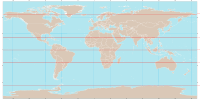
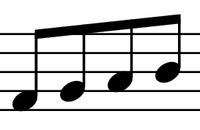




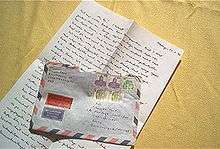

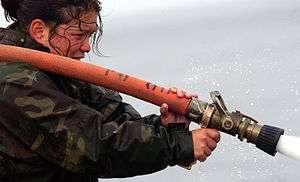
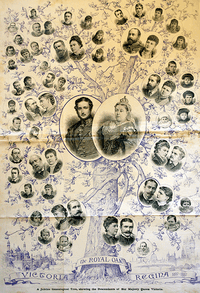



Pronunciation
- enPR: līn, IPA(key): /laɪn/
- Rhymes: -aɪn
Noun
line (plural lines)
- A path through two or more points (compare ‘segment’); a continuous mark, including as made by a pen; any path, curved or straight.
- The arrow descended in a curved line.
- 1816, Percy Shelley, The Daemon of the World:
- The atmosphere in flaming sparkles flew; / And where the burning wheels / Eddied above the mountain’s loftiest peak / Was traced a line of lightning.
- 1908, W[illiam] B[lair] M[orton] Ferguson, Zollenstein, New York, N.Y.: D. Appleton & Company, OCLC 29686887 , chapter IV:
- So this was my future home, I thought! […] Backed by towering hills, the but faintly discernible purple line of the French boundary off to the southwest, a sky of palest Gobelin flecked with fat, fleecy little clouds, it in truth looked a dear little city; the city of one's dreams.
- 2009, Jory Sherman, Sidewinder:
- For their present position, he drew an inverted V. Then he drew a line and on either side he inscribed landmarks, ridges, passes. At the other end he drew a number of inverted Vs to represent the Arapaho village.
- (geometry) An infinitely extending one-dimensional figure that has no curvature; one that has length but not breadth or thickness.
- (geometry, informal) A line segment; a continuous finite segment of such a figure.
- (graph theory) An edge of a graph.
- (geography) A circle of latitude or of longitude, as represented on a map.
- (geography, ‘the line’ or ‘equinoctial line’) The equator.
- 1851, Herman Melville, chapter 54, in Moby Dick:
- She [a ship called Town-Ho] was somewhere to the northward of the Line.
-
- (music) One of the straight horizontal and parallel prolonged strokes on and between which the notes are placed.
- (cricket) The horizontal path of a ball towards the batsman (see also length).
- (soccer) The goal line.
- 2011 October 1, Clive Lindsay, “Kilmarnock 1-2 St Johnstone”, in BBC Sport:
- St Johnstone's Liam Craig had to clear off the line before Steven Anderson sent a looping header into his own net for the equaliser on 36 minutes.
-
- A rope, cord, string, or thread, of any thickness.
- 1884, Mark Twain, chapter 9, in The Adventures of Huckleberry Finn:
- Then we hunted up a place close by to hide the canoe in, amongst the thick willows. We took some fish off of the lines and set them again, and begun to get ready for dinner.
- 2007, Robert Newcomb, A March Into Darkness, page 29:
- […] he found preparing the hook far less fun than dangling the line in the water and waiting for a fish to come along. Finally succeeding, he beamed a smile up at his father, then lowered his line into the swift-moving Sippora.
- 2008, Joshua Plunkett, Jeanne K. Hanson, The Complete Idiot's Guide to Trees and Shrubs, page 164:
- Use fabric or nursery grade webbing around stakes and trunk, loosely tying the line to the tree about 6 inches below the point where the tree bounces back in your hand when you grab the trunk.
- (firefighting) A hose.
-
- Direction, path.
- the line of sight; the line of vision
- The wire connecting one telegraphic station with another, a telephone or internet cable between two points: a telephone or network connection.
- I tried to make a call, but the line was dead.
- a dedicated line; a shared line
- Please speak up, the line is very faint.
- A letter, a written form of communication.
- Drop me a line.
- A connected series of public conveyances, as a roadbed or railway track; and hence, an established arrangement for forwarding merchandise, etc.
- a line of stages; an express line
- (military) A trench or rampart, or the non-physical demarcation of the extent of the territory occupied by specified forces.
- 1917, John Masefield, The Old Front Line:
- This description of the old front line, as it was when the Battle of the Somme began, may some day be of use. […] It is hoped that this description of the line will be followed by an account of our people's share in the battle.
-
- The exterior limit of a figure or territory: a boundary, contour, or outline; a demarcation.
- 1674, John Milton, Paradise Lost, volume IV:
- Eden stretch'd her Line / From Auran Eastward to the Royal Towrs / Of great Seleucia,
-
- A long tape or ribbon marked with units for measuring; a tape measure.
- (obsolete) A measuring line or cord.
- 1611, Bible (KJV), Isaiah 44:13:
- The carpenter stretcheth out his rule; he marketh it out with a line; he fitteth it with planes, and he marketh it out with the compass, and maketh it after the figure of a man, according to the beauty of a man; that it may remain in the house.
- 1611, Bible (KJV), Isaiah 44:13:
- That which was measured by a line, such as a field or any piece of land set apart; hence, allotted place of abode.
- 1611, Bible (KJV), Psalms 16:6:
- The lines are fallen unto me in pleasant places; yea, I have a goodly heritage.
- 1611, Bible (KJV), Psalms 16:6:
- A threadlike crease or wrinkle marking the face, hand, or body; hence, a characteristic mark.
- 1651, John Cleveland, “Fuscara”, in George Saintsbury, editor, Minor poets of the Caroline period, published 1921):
- He tipples palmistry, and dines On all her fortune-telling lines.
- 1812-1818, Lord Byron, Childe Harold's Pilgrimage:
- Though on his brow were graven lines austere.
- 1975, Bob Dylan (music), “Tangled Up in Blue”, in Blood on the Tracks:
- I muttered somethin' underneath my breath / She studied the lines on my face / I must admit I felt a little uneasy / When she bent down to tie the laces of my shoe / Tangled up in blue.
-
- Lineament; feature; figure (of one's body).
- c.1609, William Shakespeare, The Tragedy of Cymbeline:
- I mean, the lines of my body are as well drawn as his.
-
- A more-or-less straight sequence of people, objects, etc., either arranged as a queue or column and often waiting to be processed or dealt with, or arranged abreast of one another in a row (and contrasted with a column), as in a military formation. [from mid-16thc.]
- The line forms on the right.
- There is a line of houses.
- 1817, Percy Shelley, The Revolt of Islam:
- A band of brothers gathering round me, made, / Although unarmed, a steadfast front […] now the line / Of war extended, to our rallying cry / As myriads flocked in love and brotherhood to die.
- (military) The regular infantry of an army, as distinguished from militia, guards, volunteer corps, cavalry, artillery, etc.
- A series or succession of ancestors or descendants of a given person; a family or race; compare lineage.
- (Can we date this quote?), Geoffrey Chaucer, The Canterbury Tales:
- Of his lineage am I, and his offspring / By very line,
- c.1604, William Shakespeare, Macbeth:
- They hail'd him father to a line of kings.
- 1611, Bible (KJV), Psalms 19:4:
- Their line is gone out through all the earth, and their words to the end of the world. In them hath he set a tabernacle for the sun.
- 1651, Thomas Hobbes, Leviathan:
- [T]he rest of the history of the Old Testament derives the succession of the line of David to the Captivity, of which line was to spring the restorer of the kingdom of God […].
-
- A small amount of text. Specifically:
- A written or printed row of letters, words, numbers, or other text, especially a row of words extending across a page or column, or a blank in place of such text.
- The answer to the comprehension question can be found in the third line of the accompanying text.
- A verse (in poetry).
- 1609, William Shakespeare, Sonnet 71:
- Nay if you read this line, remember not, / The hand that writ it.
-
- A sentence of dialogue, especially [from the later 19thc.] in a play, movie, or the like.
- He was perfecting his pickup lines for use at the bar.
- "It is what it is" was one his more annoying lines.
- 2010, Alison Hodge, Actor training, page 138:
- Anyone who has worked with Littlewood will wince at the memory of going over single lines time and time again, each actor in turn speaking the line until the valid intonation, phasing and emphasis emerged.
- A lie or exaggeration, especially one told to gain another's approval or prevent losing it.
- Don't feed me a line!
- A written or printed row of letters, words, numbers, or other text, especially a row of words extending across a page or column, or a blank in place of such text.
- Course of conduct, thought, occupation, or policy; method of argument; department of industry, trade, or intellectual activity. [from earlier 17thc.]
- 1835, Samuel Taylor Coleridge, Henry Nelson Coleridge, editor, Specimens of the table talk of the late Samuel Taylor Coleridge, page 45:
- He is uncommonly powerful in his own line; but it is not the line of a first-rate man.
-
- The official, stated position (or set of positions) of an individual or group, particularly a political or religious faction. [from later 19thc.]
- Remember, your answers must match the party line.
- The products or services sold by a business, or by extension, the business itself. [from earlier 19thc.]
- line of business, product line
- How many buses does the line have?
- The airline is in danger of bankruptcy.
- (stock exchange) A number of shares taken by a jobber.
- A measure of length:
- (historical) A tsarist-era Russian unit of measure, approximately equal to one tenth of an English inch, used especially when measuring the calibre of firearms.
- 1906, Reports of military observers to the armies in Manchuria, page 261:
- The arm of the Russian infantry is the three-line rifle, model 1891 (caliber 0.299 inch) […].
- 2013, The United States in the First World War: An Encyclopedia, ISBN 1135684464, page 561:
- A “line” was a unit of measurement used in tsarist Russia and equal to about a tenth of an inch. The 3-line rifle, therefore, had a bore of three lines, or approximately .30 caliber.
-
- One twelfth of an inch.
- 1883, Alfred Swaine Taylor, Thomas Stevenson, The principles and practice of medical jurisprudence:
- The cutis measures in thickness from a quarter of a line to a line and a half (a line is one-twelfth of an inch).
-
- One fortieth of an inch.
- 1922, “Statement of James Turner, Representing Universal Button Fastening Co., Detriot, Mich.”, in Hearings Before the Committee on Finance, United States Senate, page 5337:
- In case any of the committee do not understand what is meant by a rate per line, I may say that buttons, being very small, are not measured by the foot or inch, but by the line, a line being one-fortieth of an inch. For example, that is a 27-line button […].
-
- (historical) A tsarist-era Russian unit of measure, approximately equal to one tenth of an English inch, used especially when measuring the calibre of firearms.
- (historical) A maxwell, a unit of magnetic flux.
- 1898, Alfred Eugene Wiener, Practical calculation of dynamo-electric machines, page 47:
- At the same time, however, for calculation in the metric system, one metre is taken as the unit for the length of the conductor, one metre per second as the unit velocity, and one line per square centimetre as the unit of field density.
- 1903, William Richard Kelsey, Continuous current dynamos and motors and their control, page 39:
- The density will now be only one quarter of a line per square centimetre, and therefore a unit pole placed at a distance of 2 centimetres from a similar pole, will only be acted on with a force of one quarter of a dyne, […].
- 1904, Silvanus Phillips Thompson, Dynamo-electric machinery: a manual for students of electrotechniques: Volume 1, Part 1, page 74:
- The Paris Congress of 1900 adopted the name gauss as that of the unit of intensity of field, one gauss signifying one line per square centimetre. The same Congress also named one line as one maxwell, but everybody still uses the term line.
- 1909, Henry Metcalf Hobart, Electricity: a text book designed in particular for engineering, page 58:
- A magnetic flux is said to have a density of one line per square centimeter when it exerts on a unit north pole a force of one dyne.
-
- (baseball, slang, 1800s, with "the") The batter’s box.
- (fencing, ‘line of engagement’) The position in which the fencers hold their swords.
- 1861, George Chapman, Foil Practice, with a Review of the Art of Fencing, page 12:
- Thus, for example, in the line of Quarte, the direct thrust is parried by dropping the point under the adversary's blade and circling upwards, throwing off the attack in the opposite line (that of Tierce), and upon the direct thrust in the line of Tierce, by a similar action throwing off the attack in the opposite line (that of Quarte).
-
- (engineering) Proper relative position or adjustment (of parts, not as to design or proportion, but with reference to smooth working).
- the engine is in line / out of line
- A small portion or serving (of a powdery illegal drug).
- 1998, Luke Davis, Candy:
- "Let's have a line." He pulled a razor blade from his pocket and scooped out a couple of mounds. He laid out seven thick lines on a mirror. He rolled up a fifty-dollar note and snorted a line.
- 2004, Burl Barer, Broken Doll, page 64:
- "Yes, we did. We both did a line, but maybe close to a half gram of crystal meth. I did a line and he did a way much bigger line."
- 2007, D. C. Fuller, Meth Monster: Crankin' Thru Life a Look Into the Abyss, page 474:
- Snorting it was a much slower blast off and a longer less intense buzz, that was much easier to function on. A few minutes after you snort a line you can feel the niacin rush coming up your back and washing over your head, […].
-
- (obsolete) Instruction; doctrine.
- 1611, Bible (KJV), Psalms 19:4:
- Their line is gone out through all the earth, and their words to the end of the world. In them hath he set a tabernacle for the sun.
- 1611, Bible (KJV), Psalms 19:4:
- (genetics) Population of cells derived from a single cell and containing the same genetic makeup.
- (perfusion line) a set composed of a spike, a drip chamber, a clamp, a Y-injection site, a three-way stopcock and a catheter.
Synonyms
- (geometry: infinite one-dimensional figure): straight line
- (geometry: continuous segment of an infinite line): line segment
- (letter): epistle, letter, note
- (row of text): row
Hyponyms
Derived terms
|
Related terms
Translations
|
|
|
|
|
|
|
|
|
|
|
|
|
|
Verb
line (third-person singular simple present lines, present participle lining, simple past and past participle lined)
- (transitive) To place (objects) into a line (usually used with "up"); to form into a line; to align.
- to line troops
- (Can we add an example for this sense?)
- (transitive) To place persons or things along the side of for security or defense; to strengthen by adding; to fortify.
- to line works with soldiers
- 1599, William Shakespeare, Henry V, ii 4:
- Line and new repair our towns of war With men of courage and with means defendant.
- To form a line along.
- 1899, Juliana Horatia Gatty Ewing, We and the world: a book for boys, page 19:
- […] the crowd that lined the road to watch us as we wound slowly on.
- 1909, Road Notes : Cuba, United States War Department, Second Section, General Staff, No. 16, page 359:
- The mountains which have lined the road on the left here cross it and the road makes a very sharp ascent, going over them.
- 2009, Jon Fasman, The Unpossessed City:
- Knee-high garden lamps lined the path; Jim was careful to stay in their pools. Assuming he was being watched, the last thing he wanted to do was give them any reason to chase after him in the dark.
-
- (transitive) To mark with a line or lines, to cover with lines.
- to line a copy book
- (transitive, obsolete) To represent by lines; to delineate; to portray.
- 1598, William Shakespeare, As You Like It, iii 2:
- All the pictures fairest lined Are but black to Rosalind.
-
- (transitive) To read or repeat line by line.
- to line out a hymn
- 1897, Daniel Webster Davis, “De Linin’ ub de Hymns”, quoted in Jerma A. Jackson, “Exuberance or Restraint: Music and Religion after Reconstruction”, in Singing in My Soul: Black Gospel Music in a Secular Age, Chapel Hill, N.C.: University of North Carolina Press, 2004, ISBN 978-0-8078-2860-1, page 15:
- De young folks say ’tain’t stylish to lin’ ’um no mo’; / Dat deys got edikashun, an’ dey wants us all to know / Dey like to hab dar singin’-books a-holin’ fore dar eyes, / An’ sing de hymns right straight along “to manshuns in de skies”.
- 1960 July 11, Harper Lee, To Kill a Mockingbird, Philadelphia, Pa.: J. B. Lippincott & Co., OCLC 276976:
- ‘[W]hy do you all sing hymns that way?’ / ‘Linin’?’ she asked. / ‘Is that what it is?’ / ‘Yeah, it’s called linin’. They’ve done it that way as long as I can remember.’ / Jem said it looked like they could save the collection money for a year and get some hymn-books. / Calpurnia laughed. ‘Wouldn’t do any good,’ she said. ‘They can’t read.’
- 1999, Janet Duitsman Cornelius, “‘Cords of Love’: Religious Cultures Intertwined, yet Separate”, in Slave Missions and the Black Church in the Antebellum South, Columbia, S.C.: University of South Carolina Press, ISBN 978-1-57003-247-9, page 10:
- By the 1840s a typical hush-harbor meeting of African Americans had become “an amalgam of African initiation practices and camp meeting Christianity,” which included “bits of Christian doctrine and ritual” with a “focus on African initiation and ritual events.” […] A lined hymn or a “sperchul” provided the opening music. In “linin’,” also called “deaconin’,” an elder would sing two lines of a hymnbook song, perhaps one of Watts’s hymns or an older one, which would be repeated by the group of worshipers in “wailing cadences.”
- (intransitive, ‘line up’) To form or enter into a line.
- (intransitive, baseball) To hit a line drive; to hit a line drive which is caught for an out. Compare fly and ground.
- Jones lined to left in his last at-bat.
- To track (wild bees) to their nest by following their line of flight.
Translations
|
|
|
Etymology 2
Old English līn (“flax, linen, cloth”). For more information, see the entry linen.
Pronunciation
- enPR: līn, IPA(key): /laɪn/
- Rhymes: -aɪn
Noun
line (uncountable)
- (obsolete) Flax; linen, particularly the longer fiber of flax.
- 1590, Edmund Spenser, The Faerie Queene, Book V, Canto VII, VI:
- And clothed all in Garments made of line.
-
Translations
Verb
line (third-person singular simple present lines, present participle lining, simple past and past participle lined)
- (transitive) To cover the inner surface of (something), originally especially with linen.
- 1963, Margery Allingham, chapter 6, in The China Governess:
- Even in an era when individuality in dress is a cult, his clothes were noticeable. He was wearing a hard hat of the low round kind favoured by hunting men, and with it a black duffle-coat lined with white.
- The bird lines its nest with soft grass.
- to line a cloak with silk or fur
- to line a box with paper or tin
- paintings lined the walls of the cavernous dining room
-
- To reinforce (the back of a book) with glue and glued scrap material such as fabric or paper.
- 1891, English mechanics and the world of science, volume 52, page 306:
- […] such books are always close back—ie, the leather cover is always glued or pasted to the bare back of the book. After books have been lined the bands are put on if the style of binding admits of this operation.
- 1895, The British Printer, volume VIII, page 94:
- Then again line the back, again bringing the paper a little further in than the second lining, and repeat the operation according to what you think the weight and size of the book demands in extra strength, […]
-
- (transitive) To fill or supply (something), as a purse with money.
- 1602, Richard Carew, Thomas Tonkin, editor, Carew's Survey of Cornwall, published 1811, page 34:
- because the charge amounteth mostly very high for any one man's purse, except lined beyond ordinary, to reach unto
- to line the shelves
-
Derived terms
(terms derived from the verb "line"):
Translations
Etymology 3
Borrowing from Middle French ligner.
Verb
line (third-person singular simple present lines, present participle lining, simple past and past participle lined)
- (transitive, now rare, of a dog) to copulate with, to impregnate.
- 1825, A Lawson, The Modern Farrier:
- A bitch lined by a mangy dog is very liable to produce mangy puppies, and the progeny of a mangy bitch is certain to become affected some time or other.
- 1855, William Youatt, The Dog:
- Pliny states that the inhabitants of India take pleasure in having their dog bitches lined by the wild tigers, and to facilitate this union, they are in the habit of tieing them when in heat out in the woods, so that the male tigers may visit them.
- 1868 September, The Country Gentleman's Magazine, page 292:
- Bedlamite was a black dog, and although it may be safely asserted that he lined upwards of 100 bitches of all colours, red, white, and blue, all his produce were black.
-
Translations
References
Statistics
Anagrams
Italian
Etymology
Noun
line f (invariable)
- line management
- editing (of a TV programme)
Related terms
Anagrams
Latin
Verb
line
- second-person singular present active imperative of linō
References
- LINE in Charles du Fresne du Cange’s Glossarium Mediæ et Infimæ Latinitatis (augmented edition, 1883–1887)
Norwegian Nynorsk
Etymology
From Latin linea and Old Norse lína
Alternative forms
Noun
line f (definite singular lina, indefinite plural liner, definite plural linene)
- a line
References
- “line” in The Nynorsk Dictionary.
Old English
Etymology
From Proto-Germanic *līnǭ (“line, rope, flaxen cord, thread”), from Proto-Germanic *līną (“flax, linen”), from Proto-Indo-European *līno- (“flax”). Akin to Old High German līna (“line”) (German Leine (“rope”)), Middle Dutch līne (“rope, cord”) (Dutch lijn (“rope”)), Old Norse līna (“cord, rope”) (Danish line (“rope, cord”)), Old English līn (“flax, linen, cloth”).
Noun
līne f
Declension
Related terms
Descendants
- English: line

